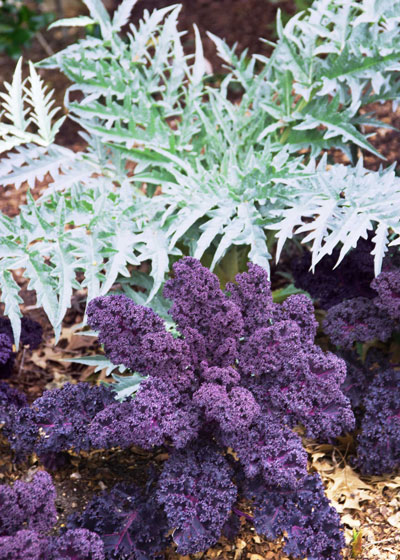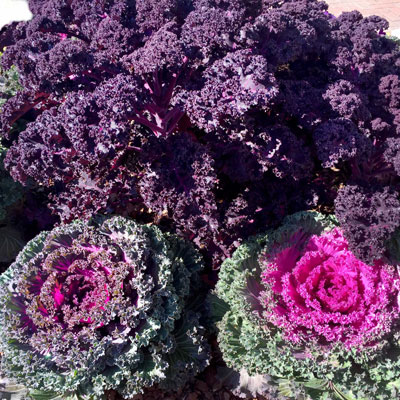Color and Drama in Winter Foliage
Interest in winter color for our landscapes, entries and patios has been on the increase for the past several decades. Enough so that plant breeders and landscapers are bringing us fun plants to try and new ways to try them.
Here are a couple you’re likely to see around town.
Cardoon…
This plant looks like a big gray-green thistle growing to 3 to 4 feet tall. It’s botanically Cynara cardunculus, and it’s from the Mediterranean area where the cool summers and mild winters are perfect for its perennial lifestyle.
Because our Texas summers are so hot we grow it as a winter annual for the drama of its foliage and its unusual habit of growth. Use it as a backdrop to other annuals, or plant it as the “thriller” in the center of very large patio pots or patio beds. Its flowers are violet-purple, thistle-like blooms and they’re really quite showy.
Every garden deserves a few cardoons.

Redbor kale…
This is another tall plant for the back of the annual bed or the center of a patio pot. It differs from our common heading ornamental kales in that grows upright with loose leaves, maturing at 18 to 30 inches before it bolts into flower by late spring.
It’s also very showy planted alongside dusty Miller, or contrasted with yellow pansies.
And, if you’re willing to part with a few Redbor leaves all along, this one is absolutely loaded with nutrients. It’s great mixed into salads. Don’t use the newest leaves, and certainly don’t harvest the bottom ones, either.
Once the plants have bolted into bloom by mid- to late spring it’s time to take them out.

